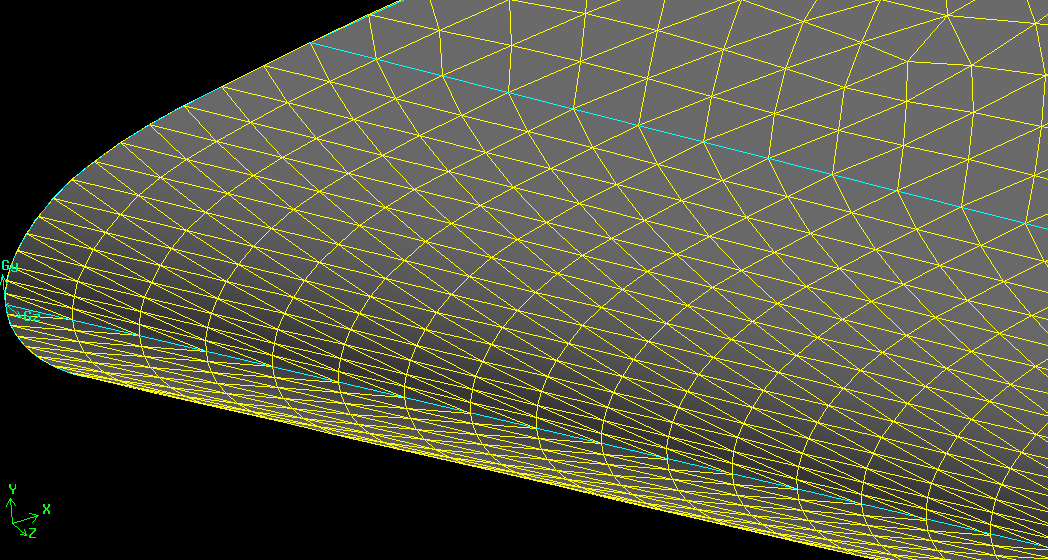Hello,
I am new to MMG after it was mentioned by deepseek and the developer of Gmsh in relation to my requirements.
I’ve also seen a somewhat related post “Using MMG with prisms” but let me explain what I am trying to achieve as I haven’t figured out how to approach it but anisotropic meshing might be a key element.
In the end I am looking for a hybrid mesh which is dominated by the boundary layer mesh due the y+<1 requirement leading to up to 32 layers of prismatic cells + a tet farfield mesh part.
I am working on cfd simulations for wings and wingbodies using OpenFOAM but the meshes are unnecessarily large and exceed hardware limits. I am looking for a way to create spanwise elongated cells while keeping the size in flow direction small to allow for airfoil profile curvature conformity especially at the leading and trailing edge of a wing or wingbody where high curvature and gradients have to be captured. An aspect ratio of 1:3 should work. From such a surface mesh a prismatic boundary layer mesh would be extruded. Have a look at the attached picture showing, what I want to achieve as a first step. I estimated a cell count reduction from 3.75M cells to 1.6M cells when using elongated cells.
Question: I think I’ll have to start with a triangular surface mesh, then use MMG to split the cells applying a rule with a size depending on the curvature in the flow direction (x) and spanwise (z) to create cells with an aspect ratio of x:z = 1:3, creating kind of an almost “structured” anisotropic mesh in critical areas where otherwise the cell count explodes. Am I right? Can someone direct me into the right direction about how to approach this.
(I have an example using the limited MMG support within Gmsh but that creates a mesh consisting of split “wedge shaped cells” from the tetahedral mesh which is not quite what I need.)
Klaus

